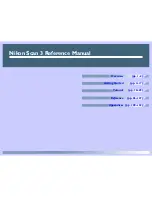
WiseScript Package Editor Reference
25
Creating WiseScript Installations
z
Setup Icon Pathname
You can leave this blank to use the default icon file. If you specify your own icon file,
you should use an icon file that has the following six icon modes.
Three sizes: 16 X 16, 32 X 32, and 48 X 48
Two colors for each size: 16 and 256 color mode.
z
Dialogs Directory
If you created a directory containing customized versions of dialog boxes and dialog
box templates, specify the path to that directory.
z
Temp. Files Directory
Specify the path to a directory to store temporary files in while building the
installation. If this directory is not specified, the Windows temporary directory is
used.
Manifest File
If this WiseScript is intended to run on Windows Vista or later operating system, or if
you will use this WiseScript in a Windows Installer installation that will run on Windows
Vista or later operating system, complete this section to specify a manifest file that
indicates the run level for the .EXE at run time. The manifest file is embedded in the
.EXE during compile.
z
Add a predefined manifest file for a specific run level
Select one of the following options to add a predefined manifest for the user level
you specify.
When you start a new WiseScript as a blank script (which is typically a custom
action), this defaults to asInvoker. When you start a new WiseScript as an empty
project (which is typically an installation), this defaults to requireAdministrator.
asInvoker
Select this option for a WiseScript that runs as a custom action in an .MSI. The
WiseScript runs with the level of the user who runs the .MSI. This prevents
failure of the .MSI due to UAC prompting on the custom action execution.
If the WiseScript performs an action that requires elevation, then place the
custom action in the Execute Deferred sequence between the InstallInitialize
and InstallFinalize actions. This lets the action run with elevated privileges.
However, if the user who runs the .MSI does not have elevated privileges, then
the WiseScript will fail and cause the .MSI installation to fail.
highestAvailable
Select this option for a WiseScript installation only, typically one that runs
differently depending on the level of the user. If an administrator runs the .EXE,
the UAC prompt appears. If a standard user runs the .EXE, the UAC prompt
does not appear and the .EXE runs as a standard user.
Do not select this option for a WiseScript custom action.
requireAdministrator
Select this option for a WiseScript installation only. When the WiseScript
installation is run, the UAC prompt appears.
Do not select this option for a WiseScript custom action. If you do, the .MSI
installation will fail due to UAC prompting on the custom action execution.
















































